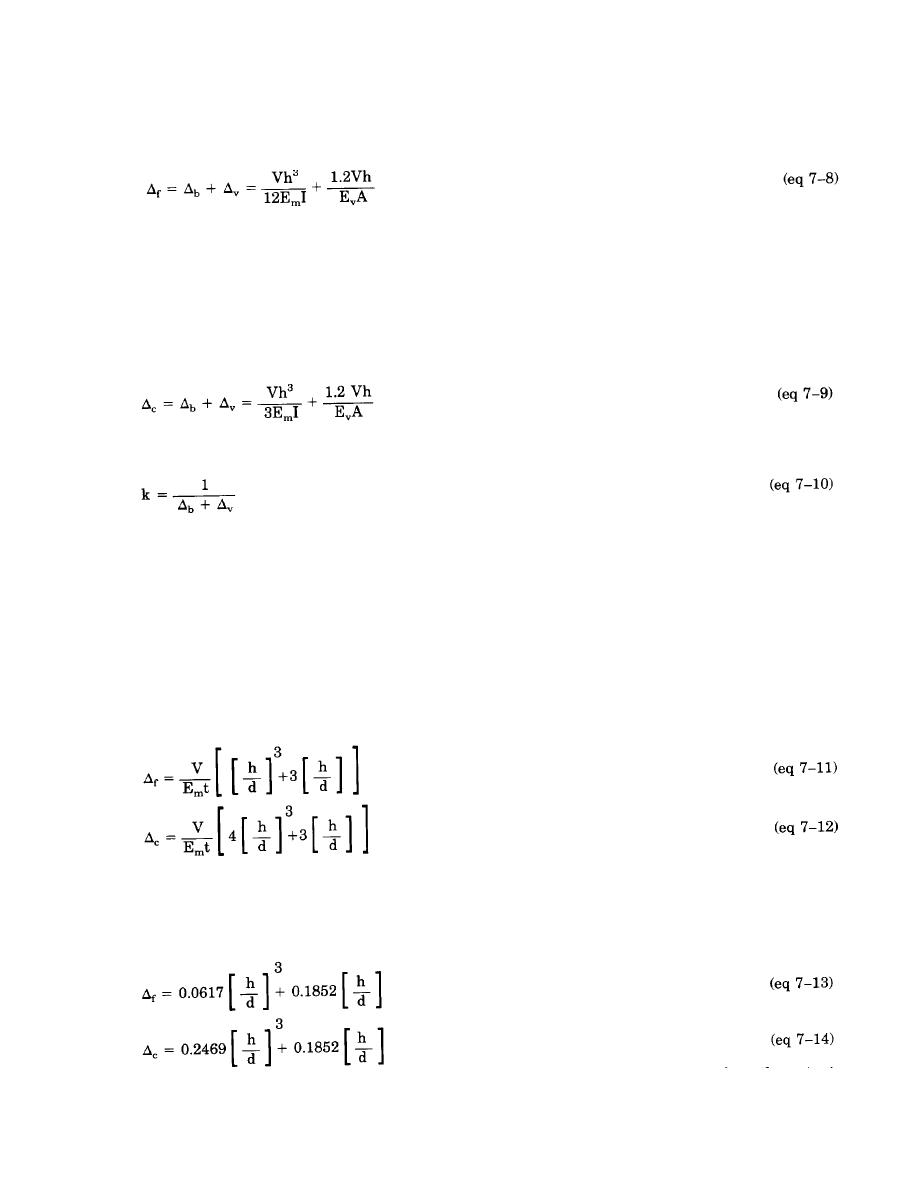
TM 5-809-3/NAVFAC DM-2.9/AFM 88-3, Chap. 3
a. Wall Deflections. When a horizontal shear force is applied at the top of a masonry wall or pier element,
it will produce a deflection. This deflection is the sum of the deflection due to flexure plus the deformation
due to shear. When both ends (top and bottom) of the element are fixed, the total deflection, )f, is defined
as follows:
Where:
)b = The flexural deflection, inches.
)v = The shear deformation, inches.
A = The horizontal cross sectional area of the wall element, in2
I = The horizontal cross sectional moment of inertia of the wall element in direction of bending, in4.
Ev = The shear modulus of masonry, psi.
= 0.4Em
When the wall or pier element is fixed at the bottom only, creating a cantilever condition, the total deflection,
is defined by the following equation:
The rigidity or stiffness of the shear wall, usually expressed as, k, is defined as the inverse of the total
deflection of the wall as stated in the following equation:
In the case of a solid wall with no openings, the computations of deflection are quite simple. However, where
the shear wall has openings for doors, windows, etc., the computations for deflection and rigidity are much
more complex. Since an exact analysis which considers angular rotation of elements, rib shortening, etc., is
not necessary, several short cut approximate methods, involving more or less valid assumptions, have been
developed. Any simplified method of determining shear wall rigidity can give inconsistent or unsatisfactory
results; therefore, a conservative approach and judgment must be used.
b. Wall deflection charts. The recommended approximate method of determining deflections and rigidities
of shear wall elements, including walls with openings is the wall deflection charts given in figure 7-5. The
charts are based upon equations 7-8 and 7-9. When openings are present, a solid wall is assumed and
subtractions and additions of the rigidities of pier increments are done to determine the relative rigidity of the
panel. By substituting "td3/12" for "I", "td" for "A", and "0.4Em" for "Ev" equations 7-8 and 7-9 can be
simplified to equations 7-11 and 7-12, respectively, as follows:
Since only relative rigidity values are required, any value could be used for Em, and t as long as walls with
differing moduli of elasticity and thickness are not being compared. V could also be arbitrary, as long as it
is consistently used throughout the comparative process. The charts in figure 7-5 are based on values of; V
= 1,000,000 pounds, Em = 1,350,000 psi, and t = 12 inches. Using these values, equations 7-11 and 7-12 can
be simplified to equations 7-13 and 7-14, respectively, as follows:
The thickness value used assumes a solid 12" thick masonry wall which is not equal to the actual standard
masonry unit thickness of 11.62" but suffices for the purposes of these equations. Curves 2 and 4 of figure
7-7


 Previous Page
Previous Page
